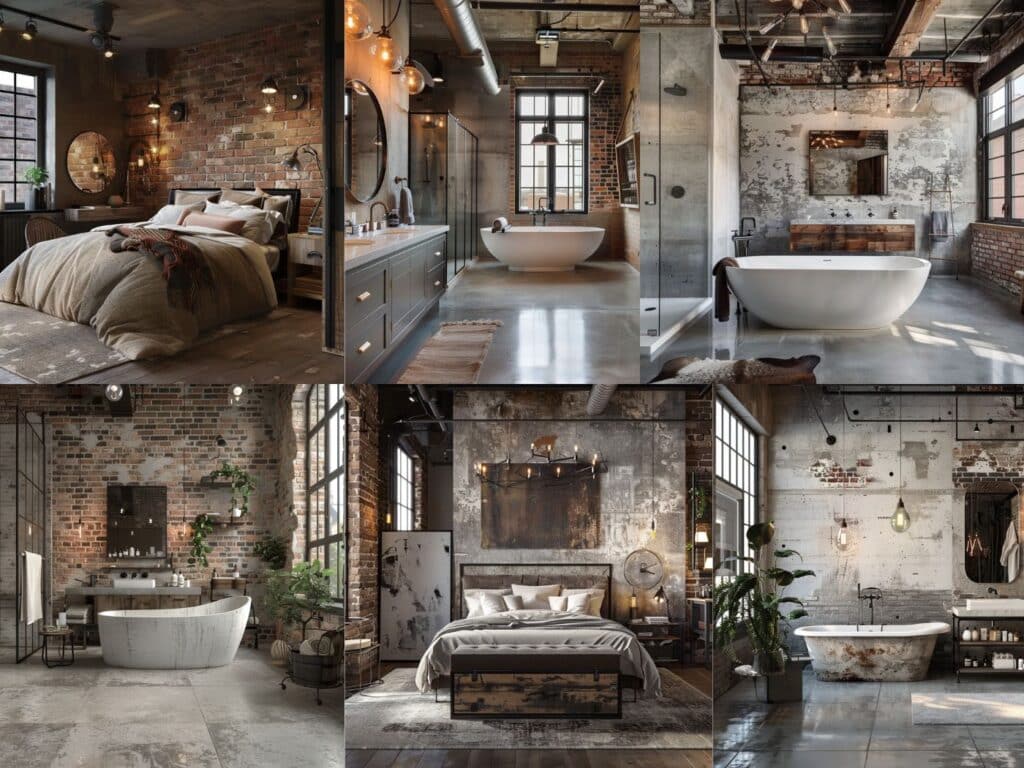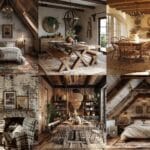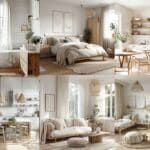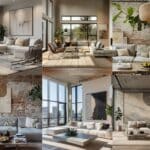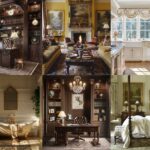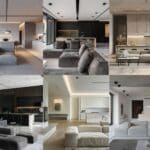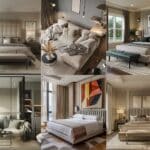Are you drawn to the raw, edgy look of exposed brick, metal fixtures, and open spaces? Industrial interior design may well be just what you’re looking for. This style, inspired by old factories and warehouses, combines practicality with a modern aesthetic, creating a space that’s both functional and stylish.
You may well be wondering how to incorporate this rugged charm into your home without it feeling too cold or uninviting. The key lies in balancing the industrial elements with softer touches. Whether you’re starting from scratch or looking to revamp an existing space, understanding the essentials of industrial design can help you create a unique and inviting atmosphere.
Top 11 Industrial Interior Design Ideas and Styles
#1. Industrial Bedroom
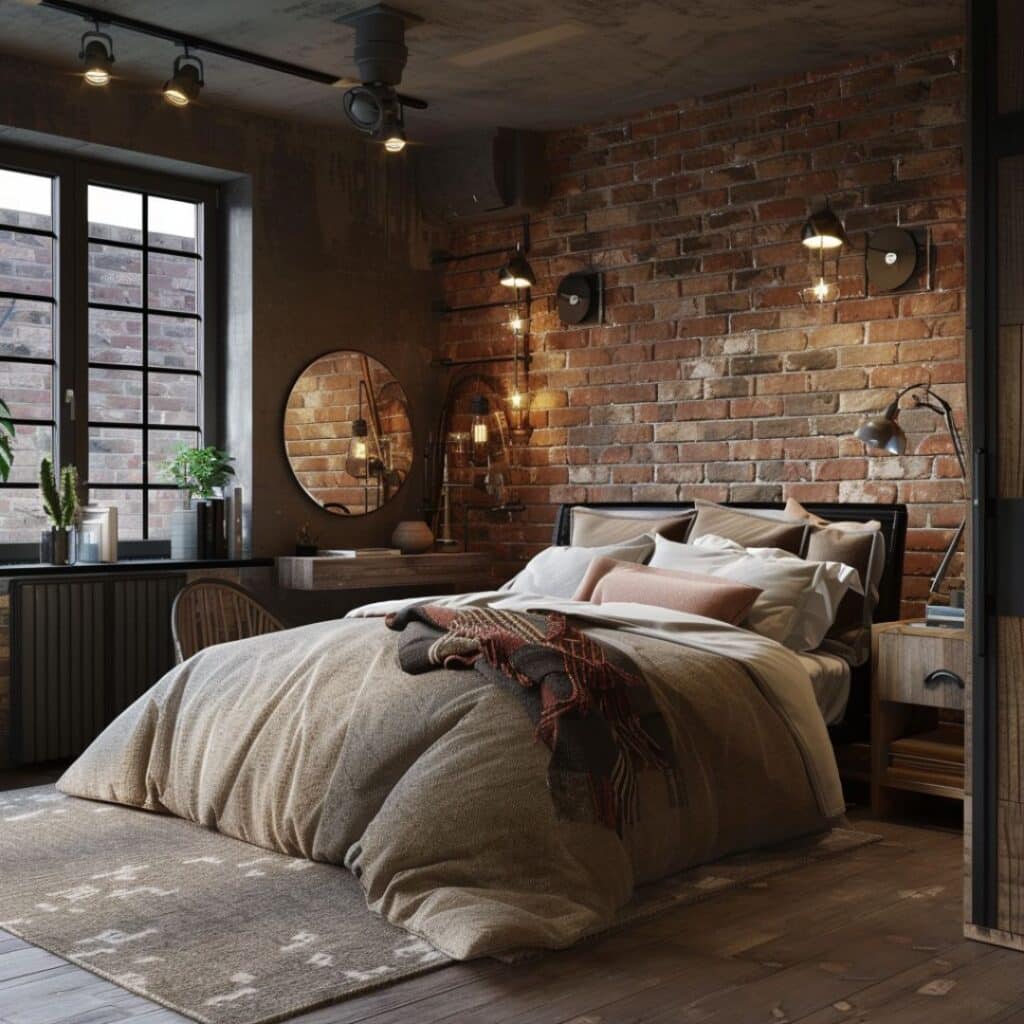
#2. Industrial Bedroom View

#3. Industrial Bedroom Style
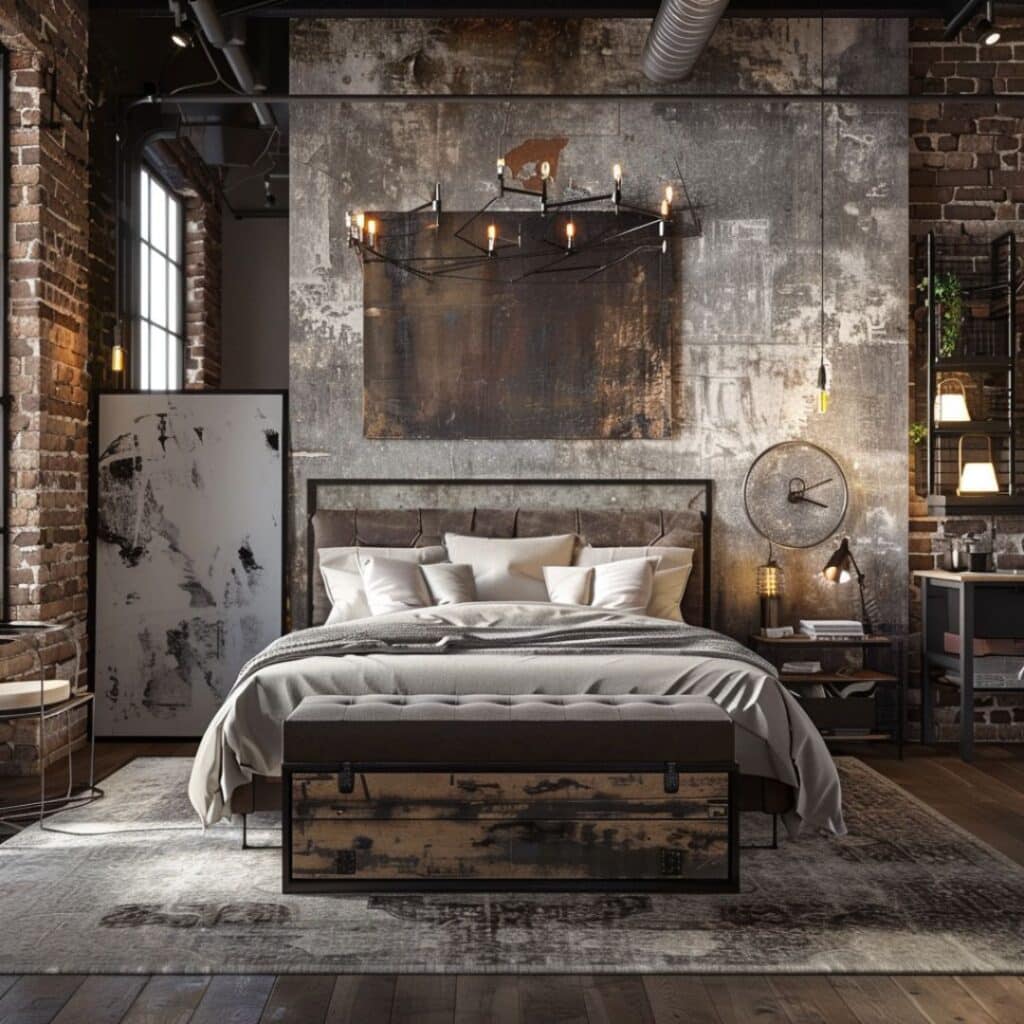
#4. Industrial Bathroom
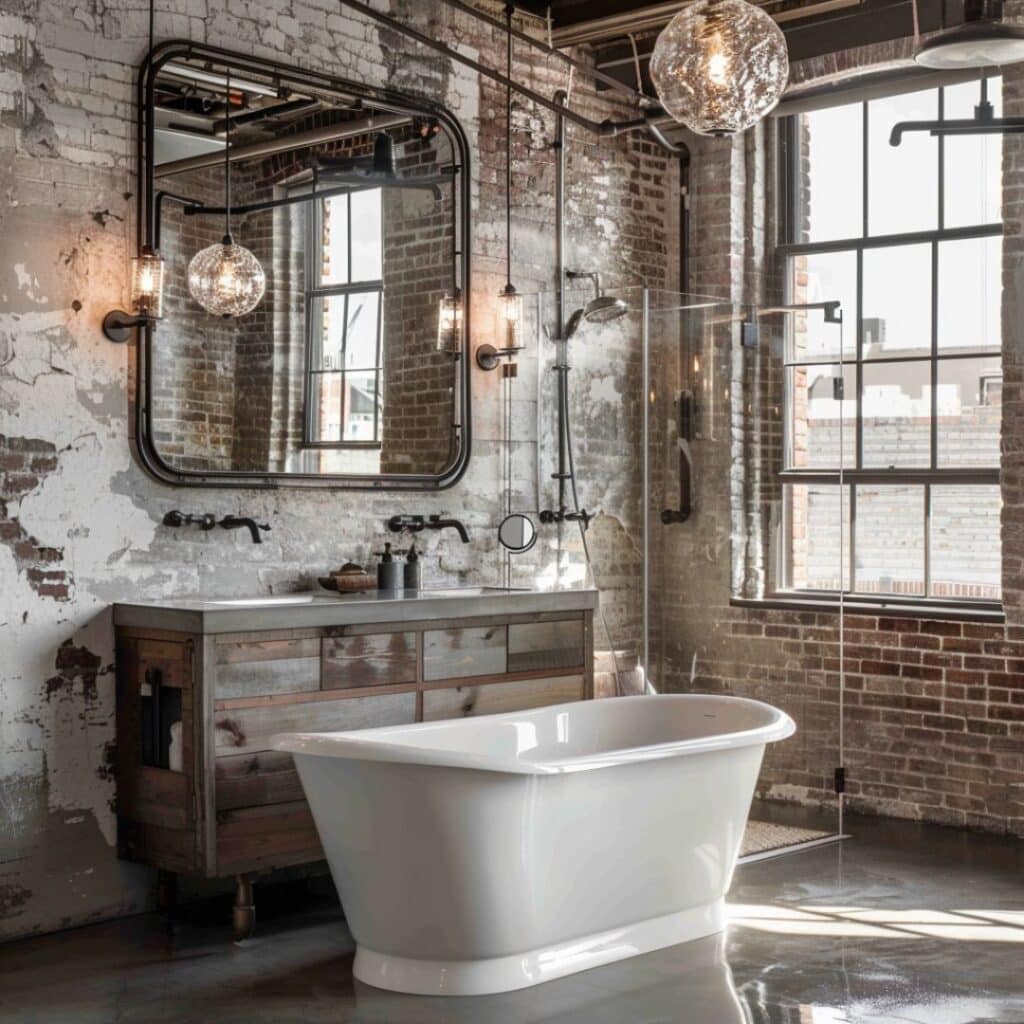
#5. Industrial Bathroom Window
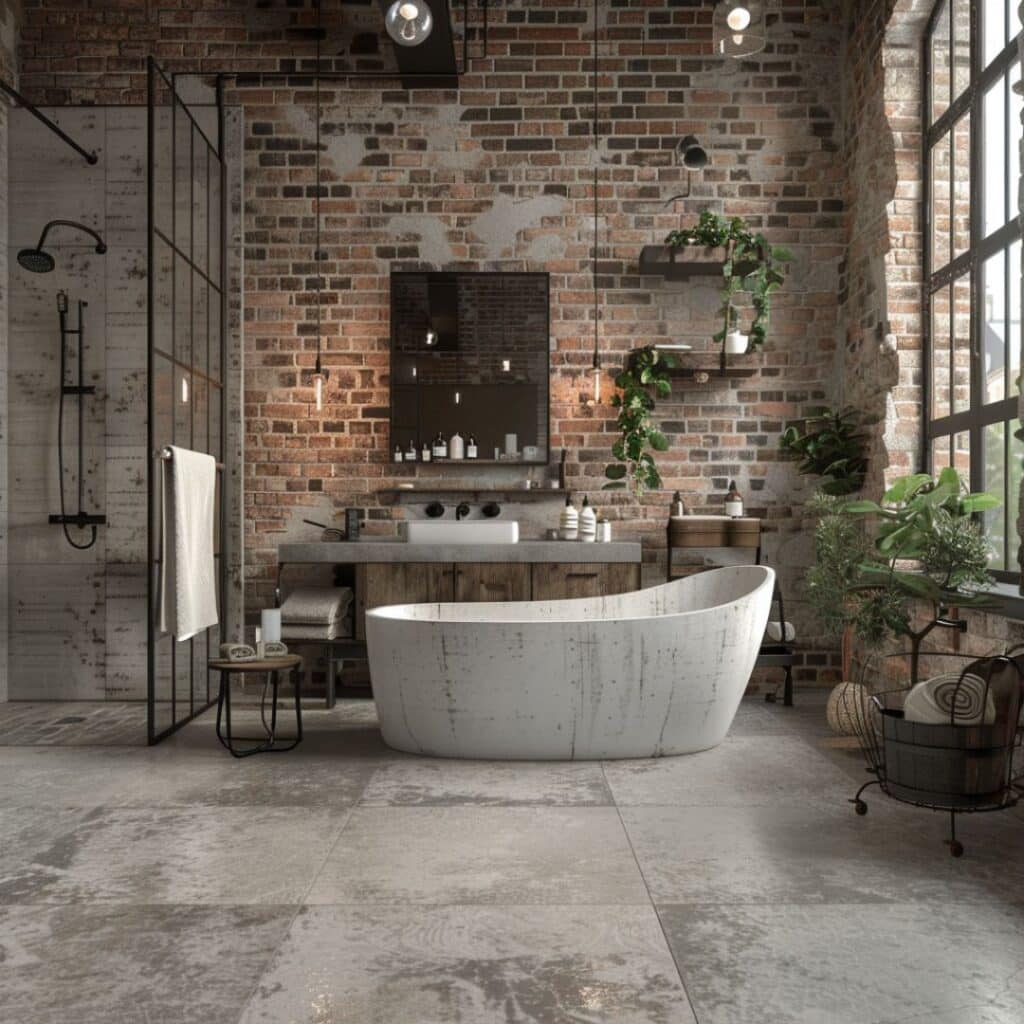
#6. Industrial Bathroom Shelf
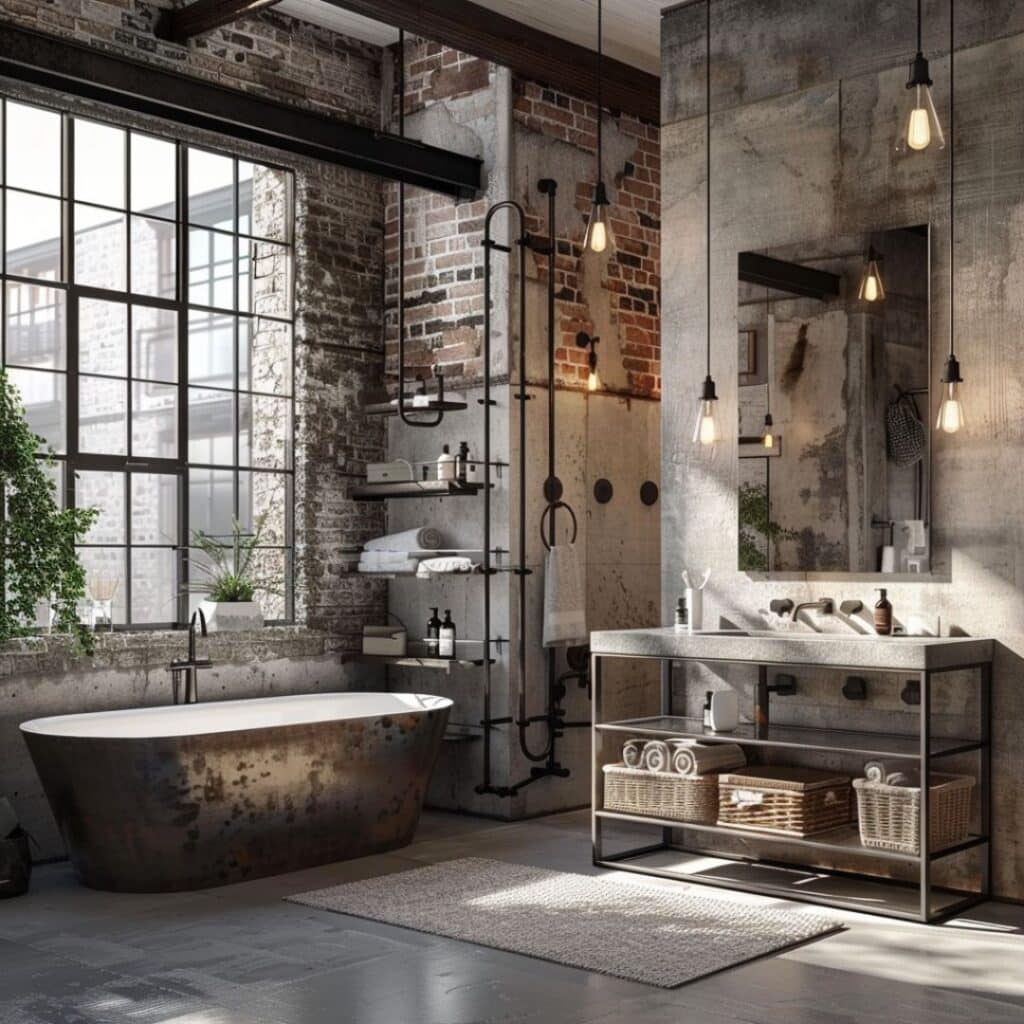
#7. Industrial Bathroom Mirror

#8. Industrial Bathroom Light

#9. Industrial Bathroom Indoor Plants

#10. Industrial Bathroom Bathtub
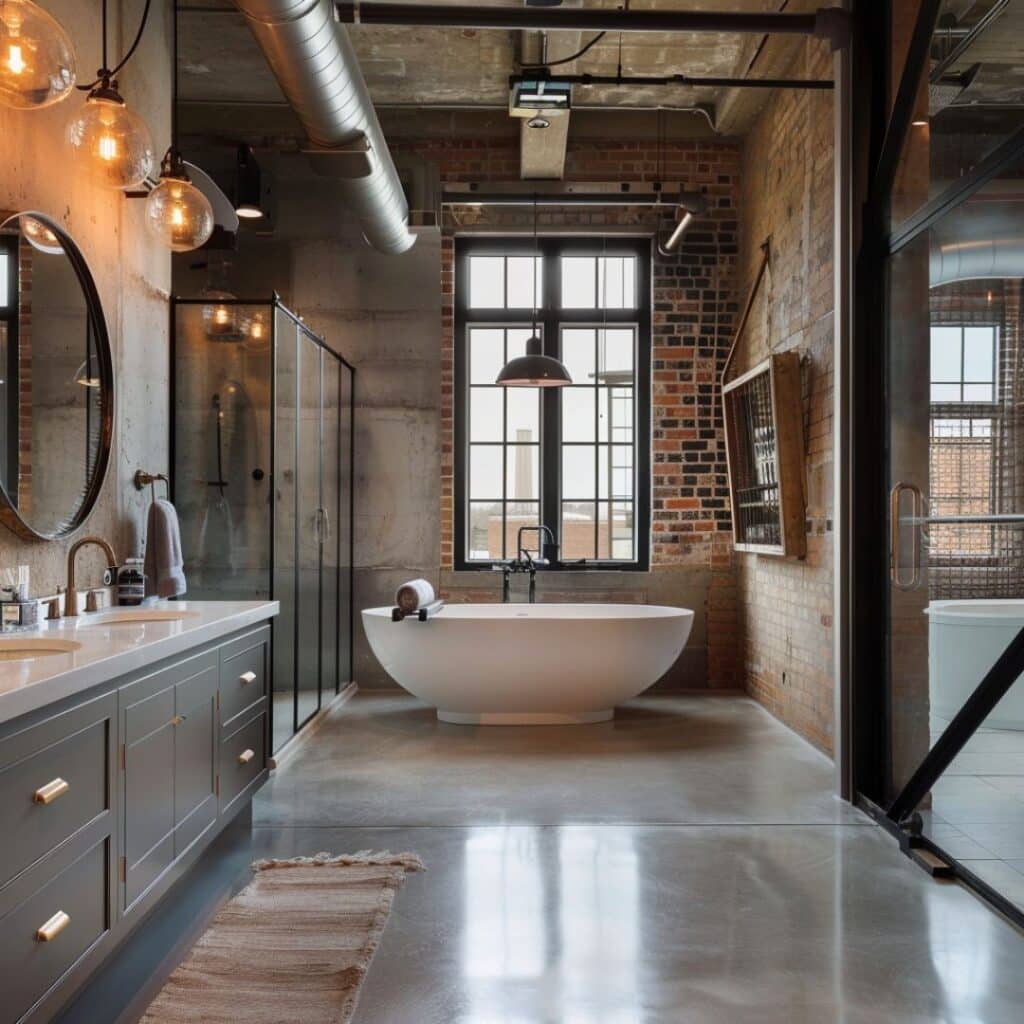
#11. Bed For Industrial Bedroom

Understanding Industrial Interior Design
Industrial interior design fuses old-world charm with modern practicality. This style embraces elements from factories and warehouses, creating a unique look that is both functional and captivating.
Origins and Evolution
Industrial design has roots in the late 19th and early 20th centuries when factories redefined architecture. Influenced by the utilitarian nature of these buildings, it features exposed structural elements like beams and brick. This style started gaining popularity in residential spaces during the 2000s.
Key Characteristics
Key features include raw materials, open floor plans, and utilitarian objects. Exposed brick, concrete floors, and visible ductwork add to its rugged appeal. Large windows, metal accents, and salvaged wood create a balanced environment. Neutral colors dominate, enhancing the spacious feeling of the area.
Essential Elements of Industrial Interior Design
Grasping the essence of industrial interior design involves focusing on key components that deliver authenticity and character. Fundamentally, three elements stand out.
Exposed Pipes and Ducts
Exposing structural elements like pipes, beams, and ductwork adds raw character. These elements, commonly found in old factories, provide a rugged charm. They should be kept in their original metal or painted in neutral tones.
Use of Metal and Wood
Metal and wood together form the backbone of industrial design. Metal, with its clean lines and durability, lends an edge. Items like steel tables or iron light fixtures exemplify this. Wood balances metal’s hardness, adding warmth through reclaimed wood furniture or timber beams.
Open Floor Plans
Open floor plans encourage fluidity and spaciousness. Removing barriers creates expansive living areas. These layouts also emphasize high ceilings and large windows, promoting natural light. Rooms flow into one another, maintaining an airy feel.
Color Palette and Materials
In industrial interior design, the color palette and materials play a pivotal role. They define the aesthetic and set the tone for the entire space.
Neutral Tones and Bold Accents
Neutral tones are staples in industrial design. Shades like gray, black, white, and brown dominate. They create a cohesive and understated backdrop.
Bold accents break the monotony of neutral tones. Vivid splashes of color, such as deep reds and vibrant blues, inject energy. These accents often come from furniture, art, or small decor items.
Essential Fabrics and Textures
Textures add depth. Raw materials like leather, linen, and wool are primary. Leather furniture or linen cushions provide tactile interest.
Industrial interiors often feature exposed textures. Brick walls or weathered wood contribute to an unfinished look. This adds both character and authenticity to the space.
Each element, from color to material, shapes the industrial design. Combining neutral bases with striking accents, along with varied textures, creates a balanced and inviting environment.
Lighting in Industrial Design Themes
Lighting is crucial in industrial interior design. It supports both aesthetics and functionality, enhancing the rugged yet refined atmosphere.
Types of Fixtures
Industrial lighting focuses on practicality and raw aesthetics. Pendant lights with metal shades provide a functional centerpiece. Track lighting offers flexibility, letting you highlight specific areas. Edison bulbs, with their exposed filaments, add an authentic vintage feel. Wall sconces made from metal or cast iron also contribute to the industrial vibe.
Placement Strategies
Effective placement of lighting fixtures enhances the industrial theme. Hang pendant lights over dining tables or kitchen islands for focused illumination. Use track lighting to highlight artwork or architectural features like exposed brick walls. Wall sconces work well in hallways and over bedside tables, providing both light and industrial flair. Consider incorporating multiple types of fixtures for layered, dynamic lighting.
Furniture Choices for Industrial Spaces
Selecting furniture for industrial designs involves considering both aesthetics and functionality. You need pieces that embody rugged charm while serving practical purposes.
Selecting Pieces With an Industrial Aesthetic
Choose furniture made of raw materials like metal and wood. Opt for metal-framed tables and wooden stools with a distressed finish. Leather sofas with clean lines fit the theme. Include open shelving units featuring metal pipes and reclaimed wood for added authenticity.
Functionality Over Form
Prioritize furniture that offers durability and practicality. Select multi-functional pieces like storage ottomans or extendable tables. Industrial spaces benefit from furniture that maximizes space, so look for items with built-in storage or modular designs. Stick to pieces that blend utility with the industrial style for a cohesive look.
How to Incorporate Industrial Design in Your Home
Industrial design blends old-world charm with modern aesthetics. Integrate this style by focusing on raw materials and functional decor.
Tips for Beginners
Start with a color palette of neutral shades like gray, white, and black. Use exposed metal and wood in furniture and decor. Opt for open shelving to display items like metal sculptures or vintage books. Keep walls bare to showcase brick or concrete.
Add statement pieces like a large metal light fixture or a reclaimed wood table. Mix textures such as leather with wool or jute for added warmth.
Common Mistakes to Avoid
Avoid over-cluttering the space; keep the layout open and airy. Don’t use overly ornate furniture; stick to simple and functional pieces. Steer clear of bright, bold colors; they disrupt the industrial vibe. Refrain from hiding structural elements like beams or pipes; they add to the aesthetic.
Avoid using too many decorative items; they can make the space feel busy and less functional. Lastly, don’t ignore lighting; industrial spaces need adequate and functional light sources, like pendant lamps or floor lamps.
Up next:

